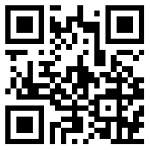提醒:点这里加小编微信(领取免费资料、获取最新资讯、解决考教师一切疑问!)
C
While the 2018 Winter Olympics in Pyeongchang, South Korea are just around the corner, attention is already turning to the 2020 Summer Olympics and Paralympics in Tokyo, Japan as
reports indicate that facial recognition will be used as a security measure at those games.
The Japan Times reported that sources confirmed the technology would be used to “streamline the entry of athletes, officials and journalists to the games venues.”
While spectators won't be subject to the recognition treatment, the number of people from the groups that will be screened with facial recognition could total anywhere between 300,000 and 400,000, according to the Times report. The extra layer of security will come on top of ID
cards that will also be handed out to those participants.
The organizing committee tested the technology at Japan's housing during the 2016 Summer Olympics in Rio de Janeiro, Brazil with moderate success though there were complaints of long waits. They hope to sort out the wait and other issues over the next 2.5 years ahead of the Tokyo Games which start in late July 2020.
NEC, the company handling the technology, also tested out their gear at two Brazil airports during the 2016 Olympics and is behind numerous other similar projects, including software used by the Chicago Police.
Facial recognition is becoming more and more prevalent and the Olympics are just the latest arena to use them for security purposes. Other examples of planned or implemented facial recognition tech in use include robot police in China, bridges and tunnels in New York City, and more widespread (and questionable) uses by the FBI.
Hell, the technology also allows you to use your fancy new phone, ration toilet paper usage, and order fast food.
Tiantan Park, home to the iconic Temple of Heaven, is now home to six high-tech dispensers that mete out toilet paper only after conducting a facial scan, The Beijing News reported.
The pilot program kicked off after authorities faced an increasing number of local residents raiding the park's restrooms for toilet paper.
34.Why will facial recognition be used in Olympic Games?
A.To test on a new technology. B.To protect athletes'privacy.
C.To simplify the way of entering. D.To ensure the safety of spectators
35.What does the underlined word "prevalent"in Paragraph 6 means?
A.Extreme. B.Official.
C.Reliable. D. Popular.
36.What does the last two paragraphs mainly talk about?
A. The features of facial recognition. B. The appliance of facial recognition.
C. The future use of facial recognition. D.The disadvantages of facial recognition.
提醒:点这里加小编微信(领取免费资料、获取最新资讯、解决考教师一切疑问!)









